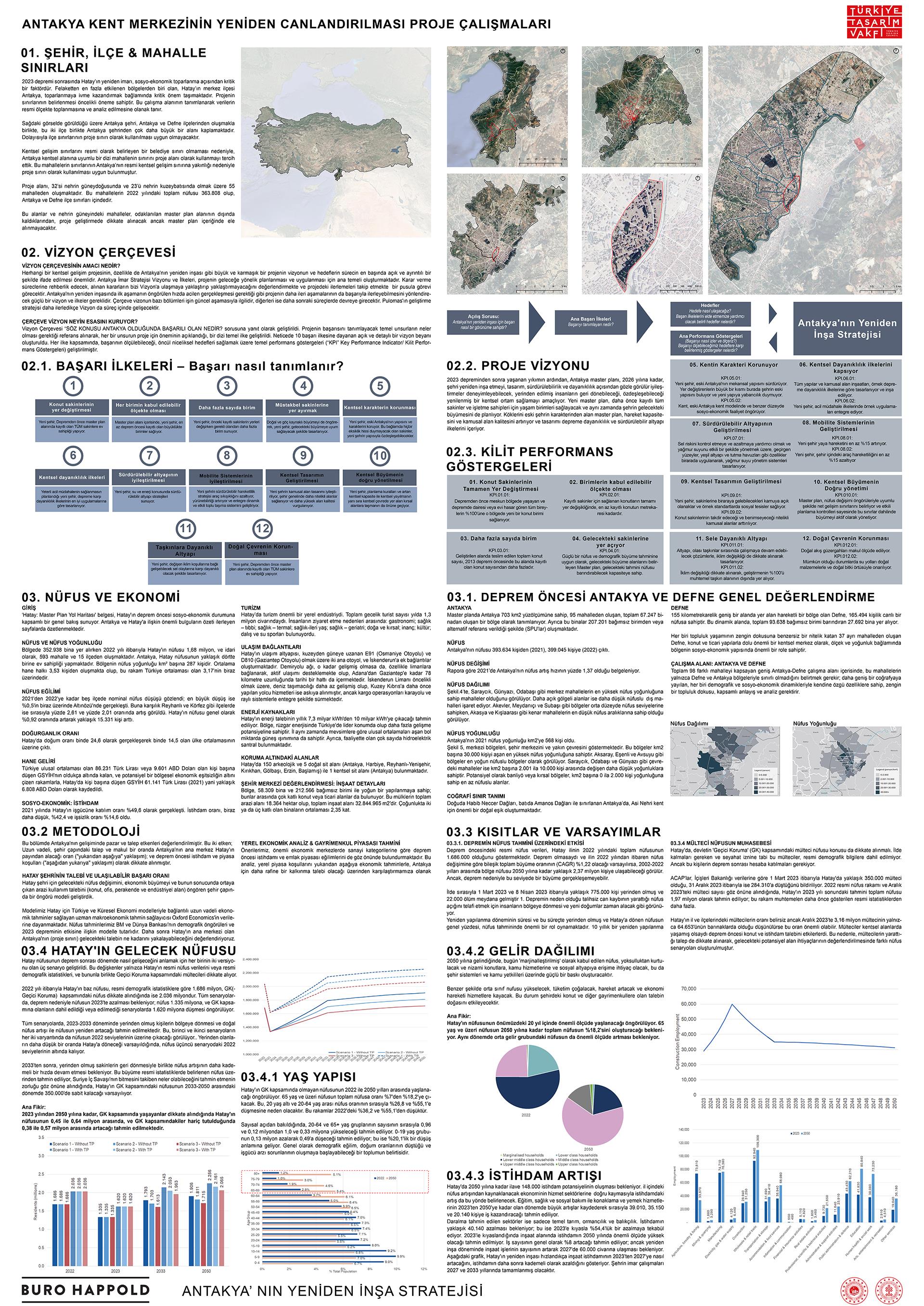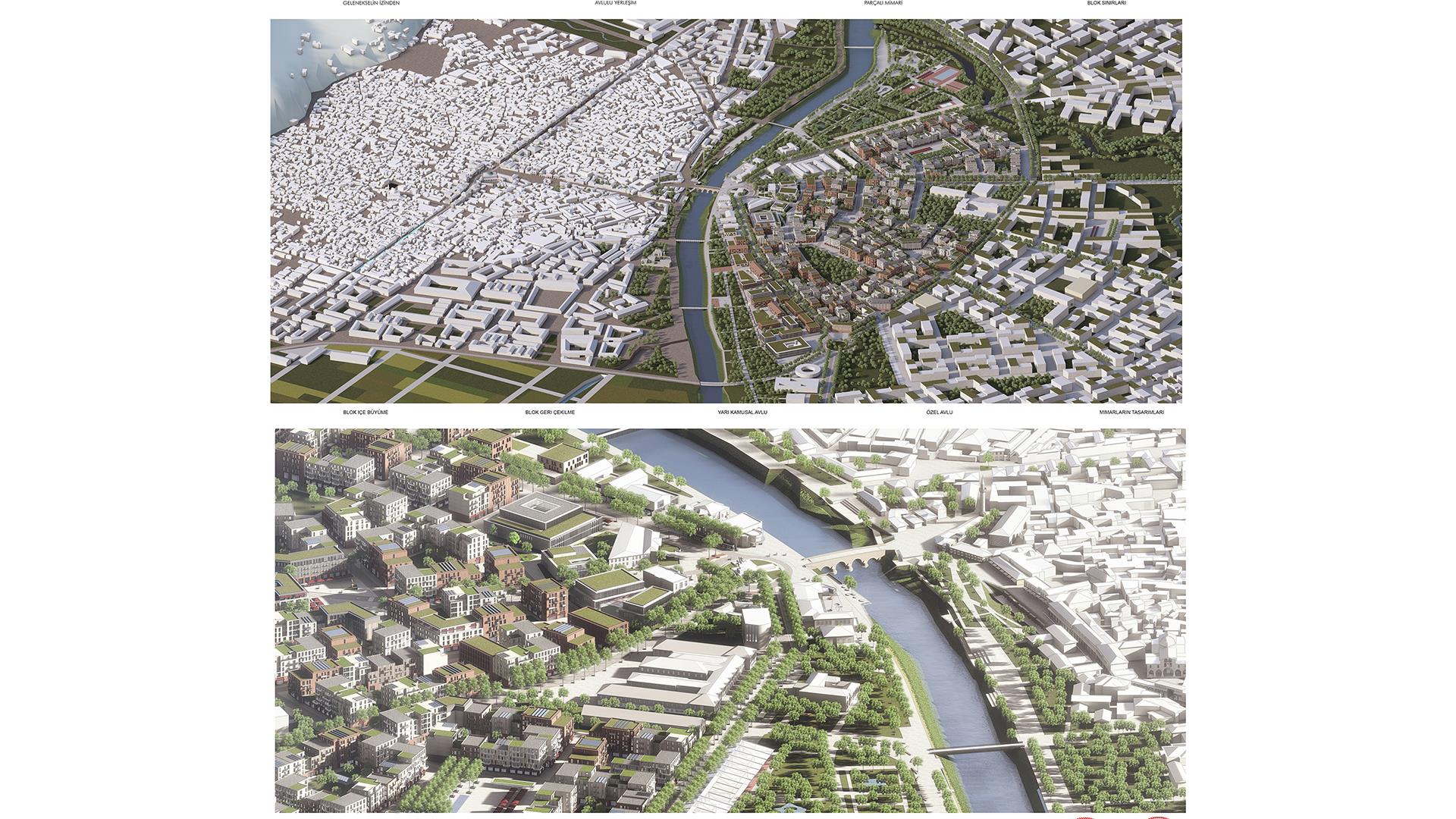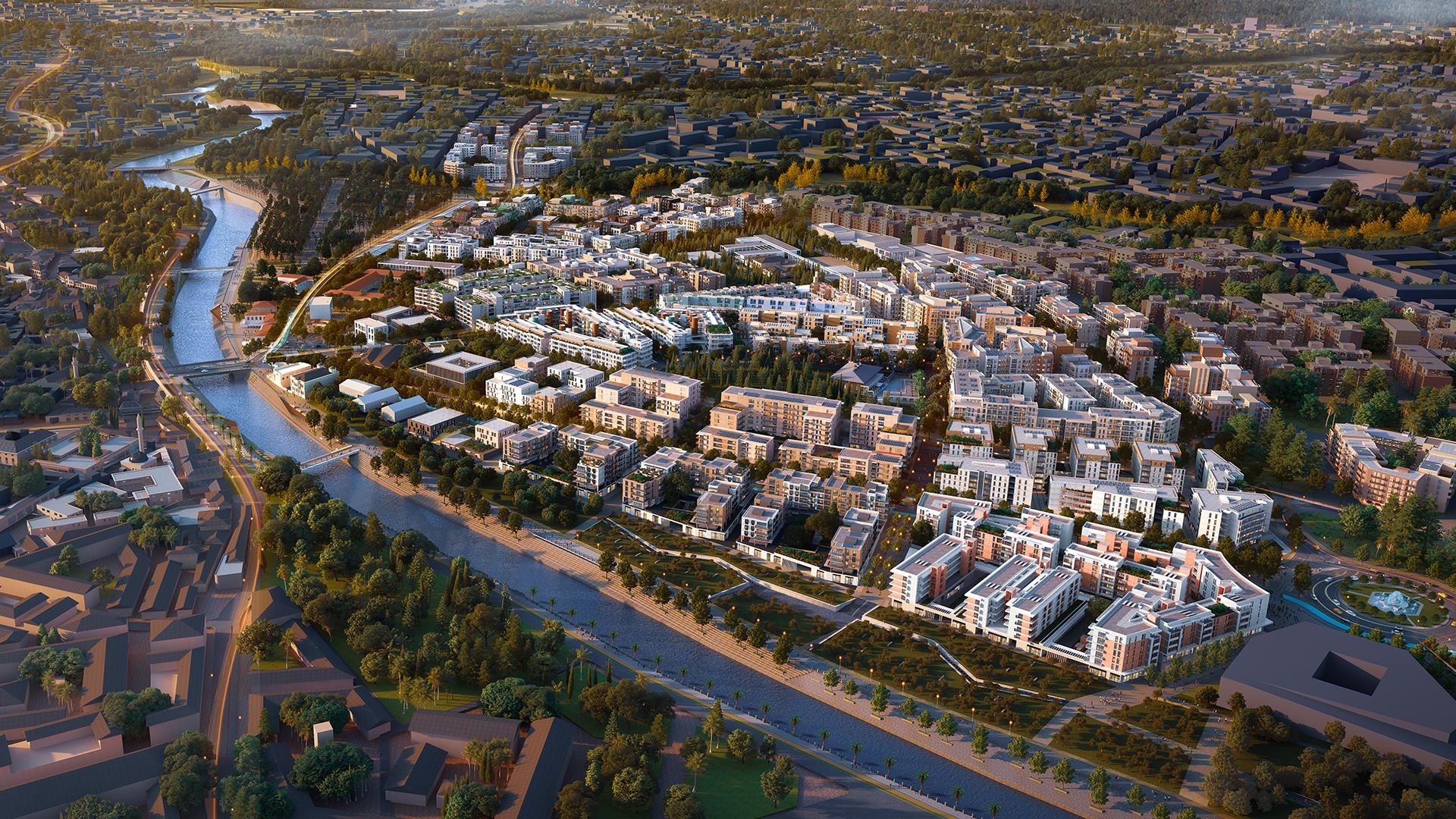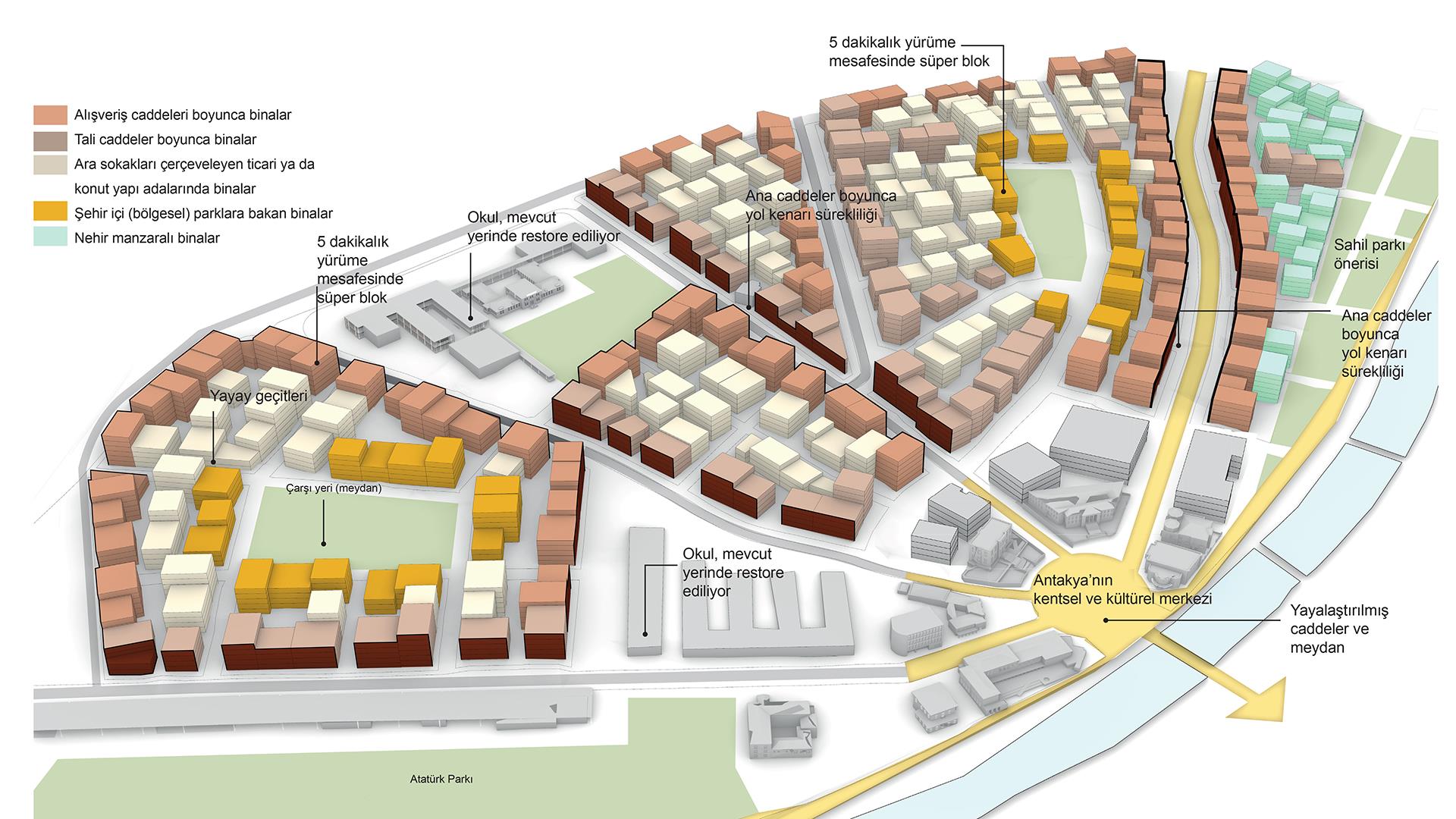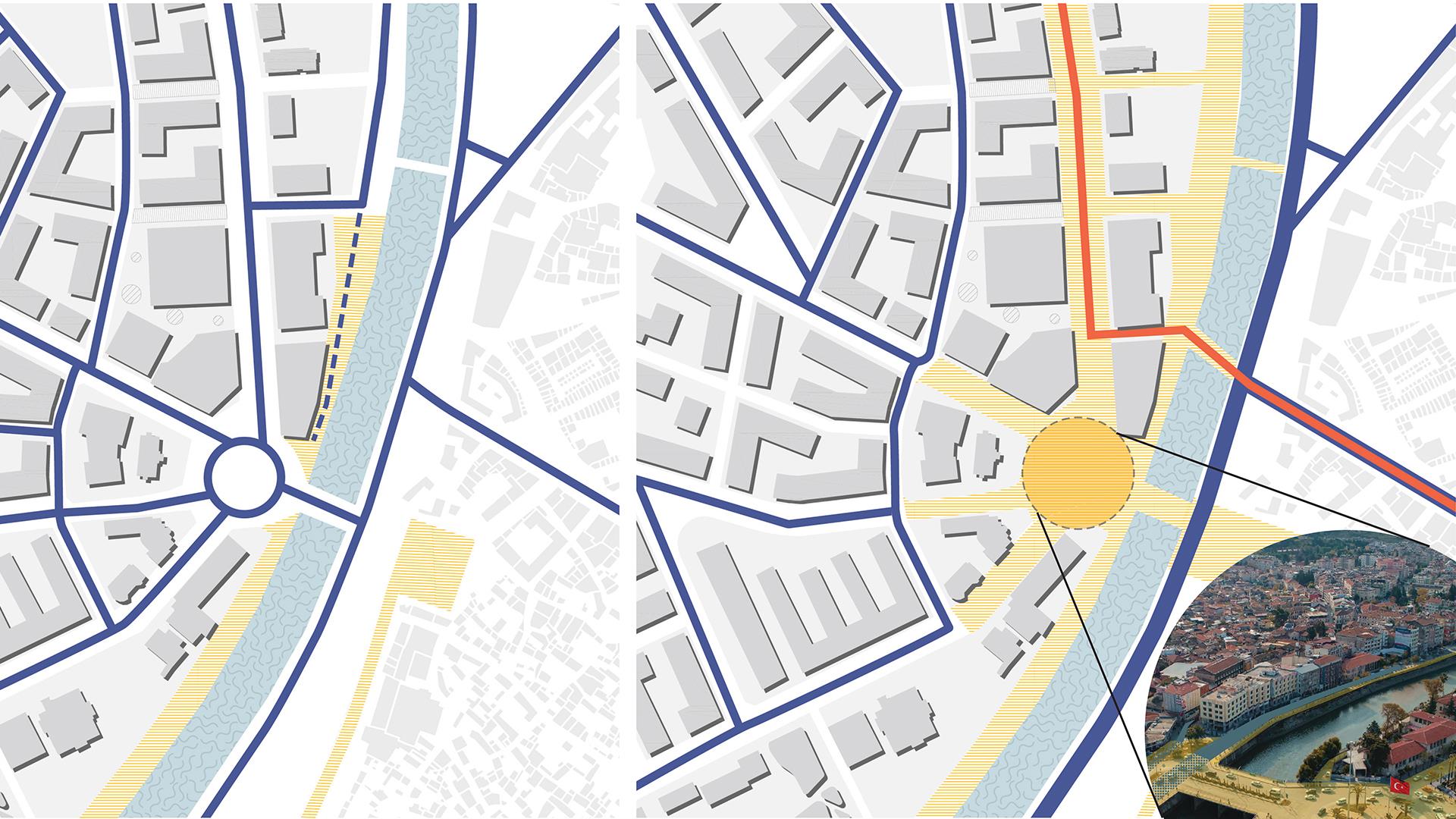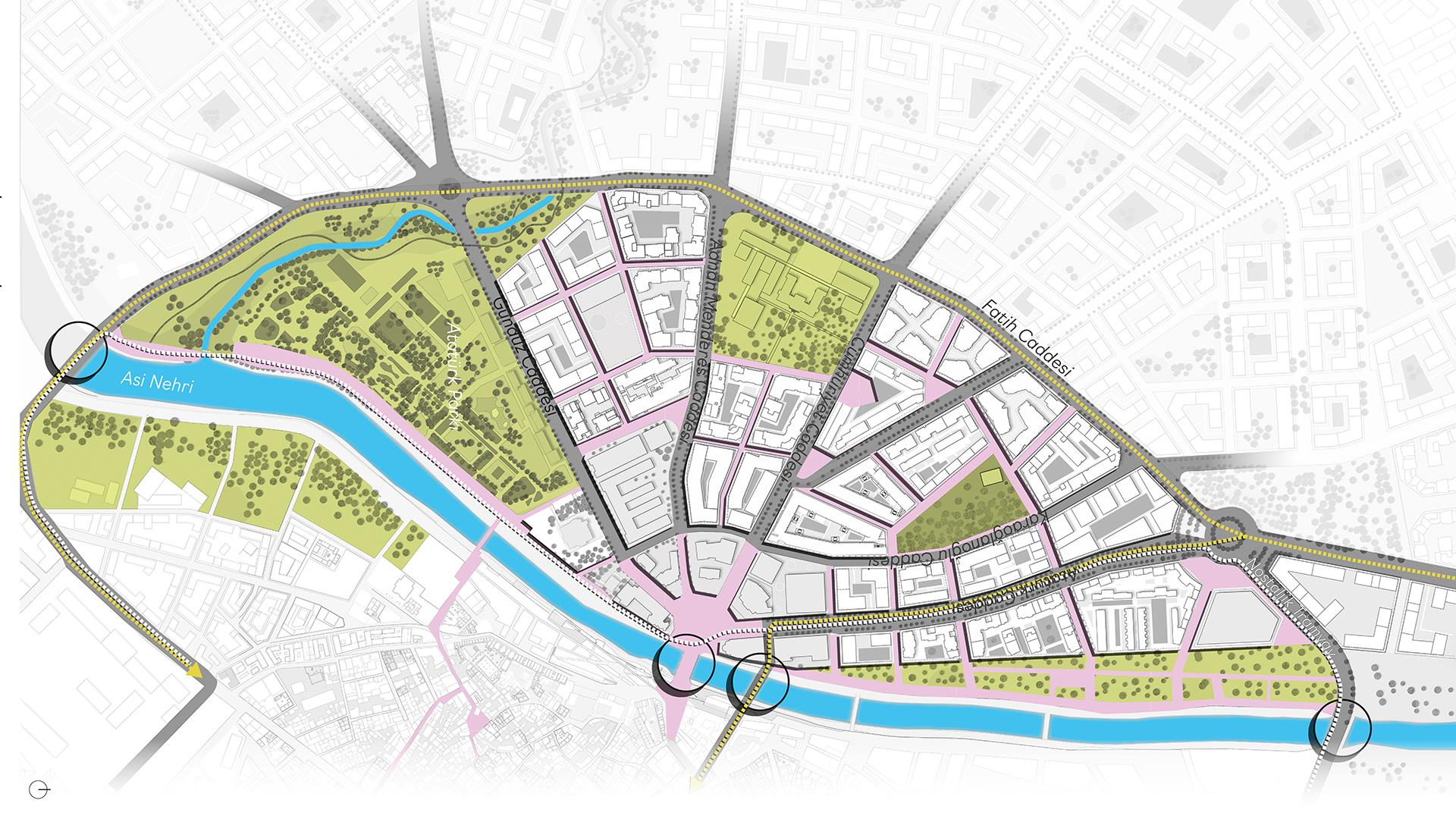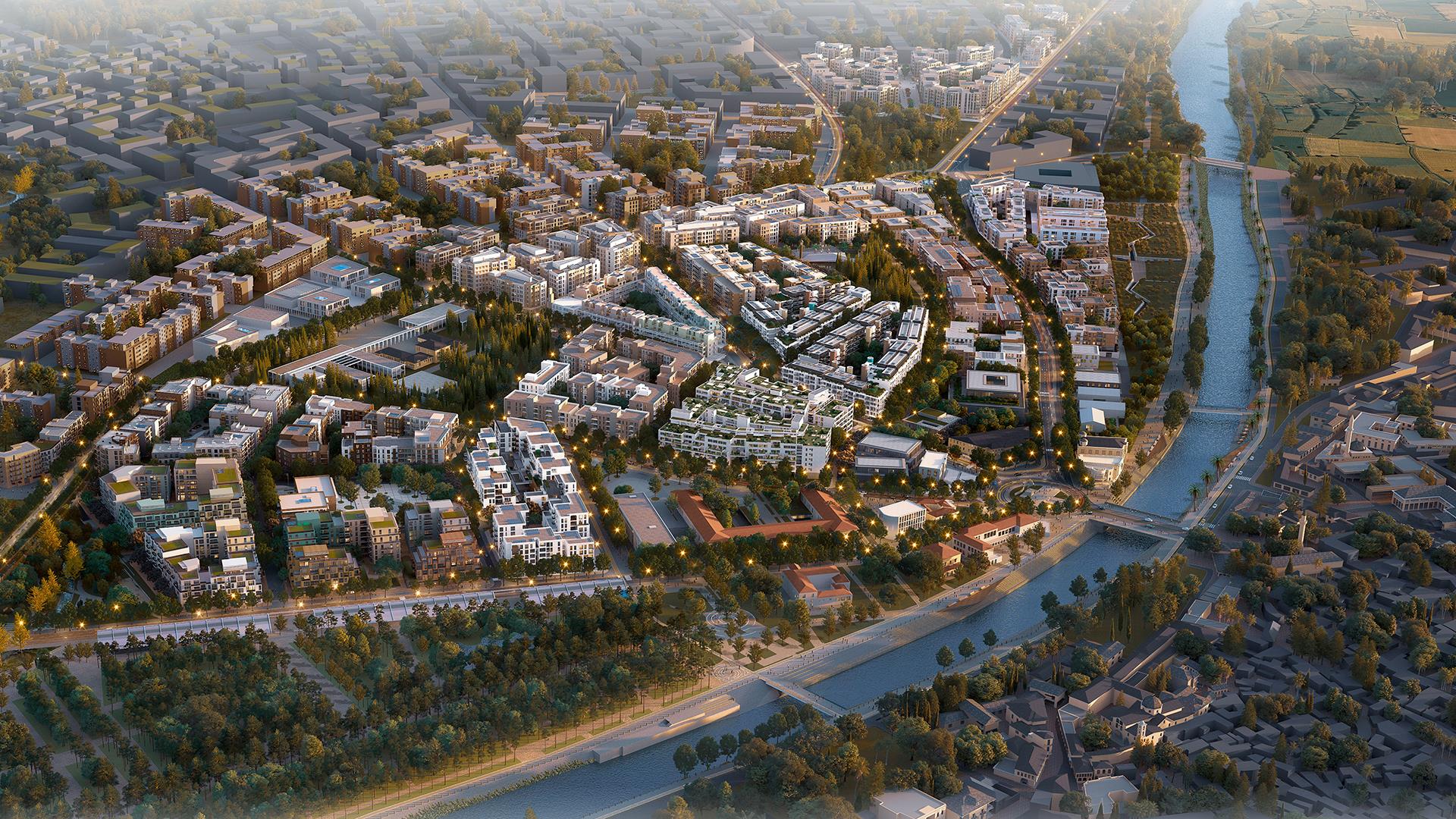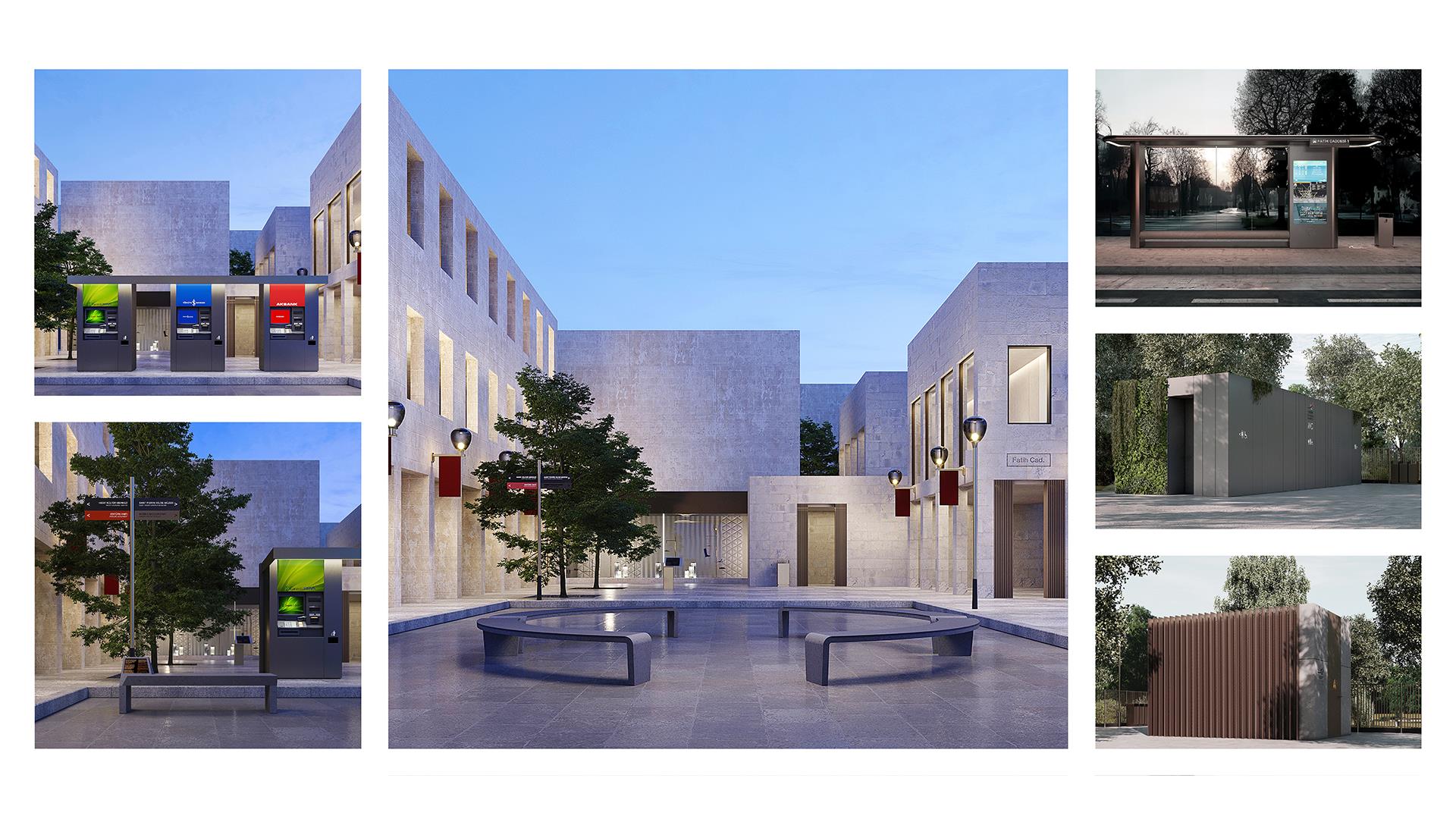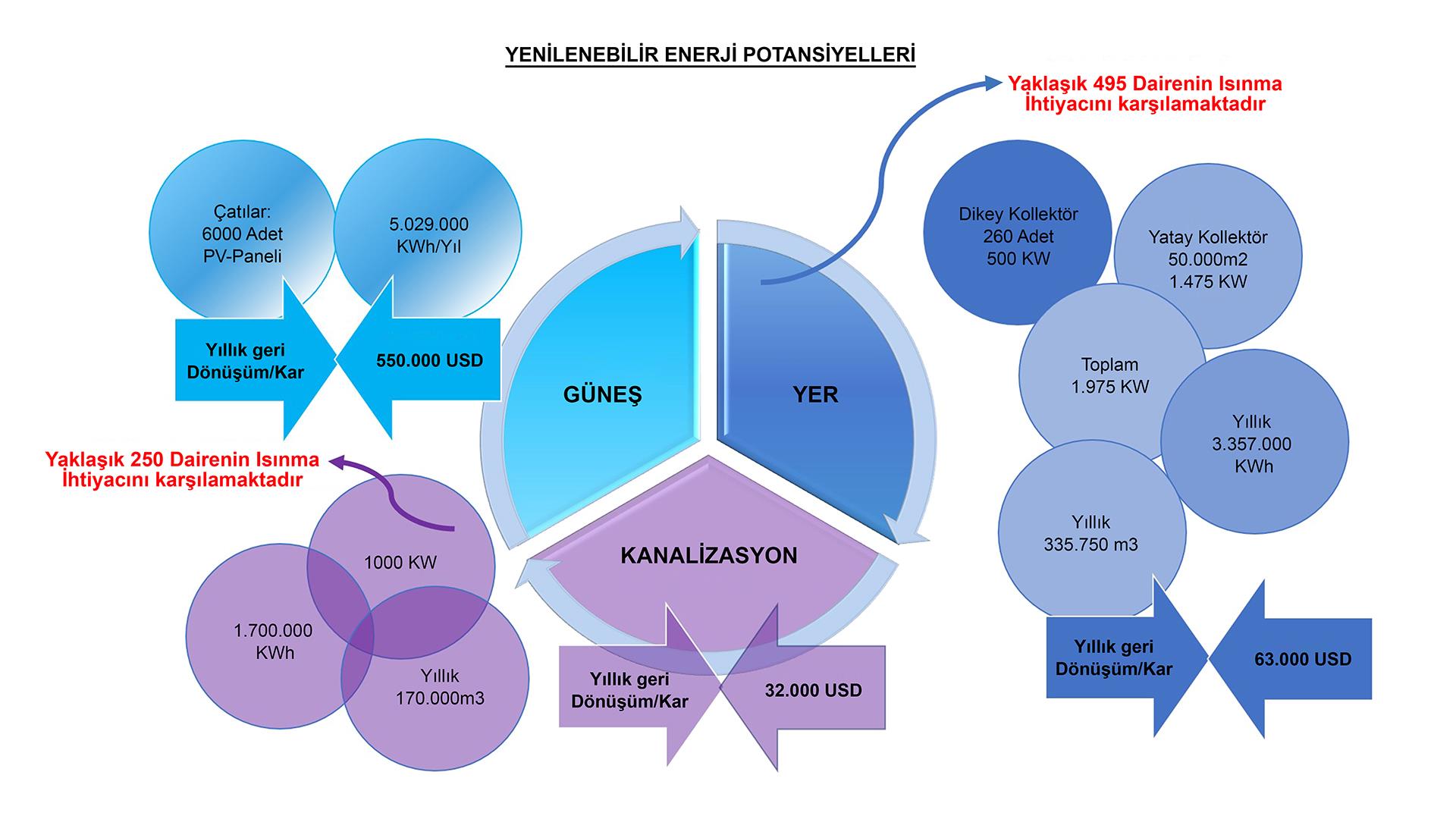RESISTANT CITY STRATEGIES
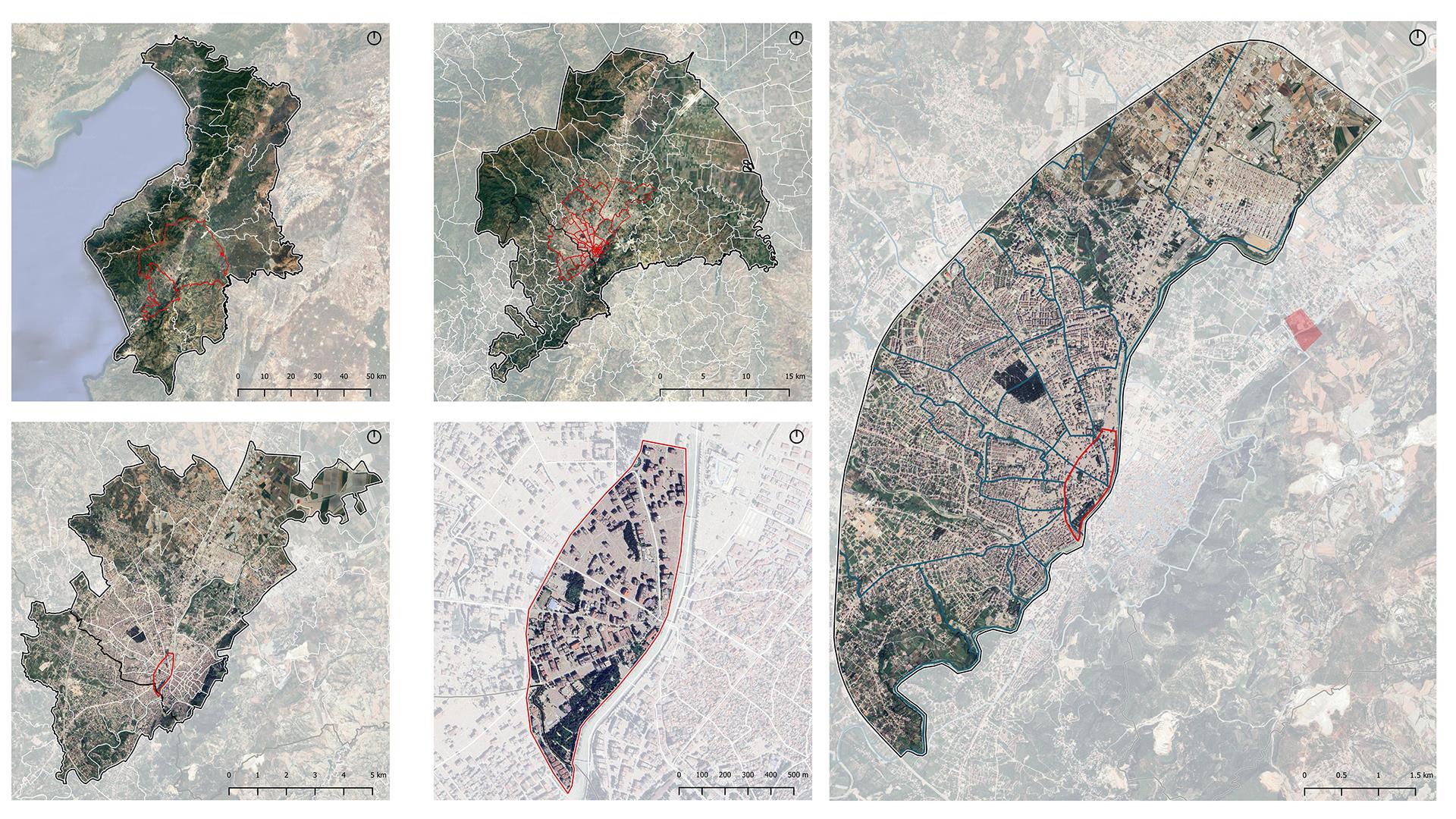
The reconstruction of Hatay following the 2023 earthquake is critical factor for its socio-economic recovery after the 2023 earthquake. Antakya as the capital district within Hatay city and as one of the areas worst affected by the catastrophe will be critical in driving the recovery.
Setting the project boundary is critical for the project. It defines the area of study and allow to collect and analyse data at an official scale. As depicted in the Figure on the right, the city of Antakya is divided between the Antakya and Defne districts and together they cover a significantly larger area than Antakya city itself. Consequently, the district boundaries are not suitable for use as project boundaries.
In the absence of an official Antakya municipal boundary delineating the city’s official development extent, we opted to utilize a set of neighbourhood boundaries that closely align with the urban area of Antakya City. Given that these neighbourhood boundaries closely approximate the official urban development boundary of Antakya, they are deemed suitable for use as the project boundary. The Project area is composed of 55 neighbourhoods, 32 Southeast of the River and 23 Northwest of the river. The Project area consists of 55 neighbourhoods, 32 in the southeast of the river and 23 in the northwest of the river. These neighbourhoods have a total population of 363,808
in 2022 and are located within the boundaries of Antakya and Defne provinces.
These areas as well as the neighbourhoods south of the river will be considered in the project development but not in the masterplan. As they fall outside the focused masterplan area.
A clear and detailed statement of vision and objectives is important at the start of any urban development project, especially one as large and complex as the reconstruction of Antakya. The Vision and Principles for the Antakya Reconstruction Strategy provide the fundamental basis for future planning and implementation of the project. It serves s a compass to guide decision making during the project and track progress and decisions can be assessed according to whether they bring us closer to achieving the Vision.
The speed in which the first phase of the reconstruction of Antakya is anticipated as well as the urgency of the rest of the project require a strong vision and principles to steer the project towards what is deemed to be a successful project. Some parts of the Vision Framework are relevant at the current stage of work, while others will not come into play until later. The Vision will also evolve over time as the development strategy for Pulomas is refined further.
What is the Vision Framework based on?
The Vision Framework has been developed in response to the question What Does Success Looks Like for Antakya? Based on what the key elements defining the success of the project, a set of key principles are developed along with an explanation of the importance of each one for the project. In total 10 Success principles have been developed. Based on these success principles a clear and detailed statement of vision has been created. Under each principles, KPIs have been developed to provide initial quantitative targets against which success can be measured.


